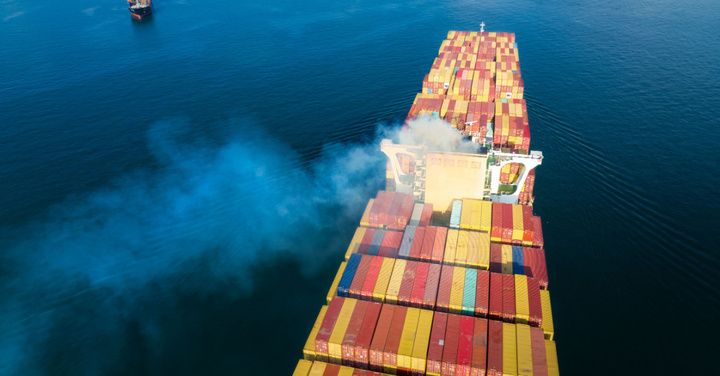
US CO2 and Carbon Emissions Regulations for Shippers to Know: Why Sustainability Matters More Than Ever in 2023
The U.S. government currently has over 30 climate laws and policies; however, this number is actually behind a few countries, like the U.K., that have fewer greenhouse gas emissions per capita.
In January 2023, the U.S. government released its National Blueprint for Transportation Decarbonization with the goal of eliminating all transportation-related emissions by 2050. This massive goal requires a solid framework to provide clarity and direction to effect change rather than encouraging greenwashing. More companies—including those relying on the transportation sector for their freight—are facing new US emissions regulations, policies, and initiatives. How they navigate these means the difference between being in a good position regarding to ESG (environmental, social, and governance) goals and facing penalties and other unintended consequences.
What is the U.S. National Blueprint for Transportation Decarbonization?
The U.S. National Blueprint for Transportation Decarbonization was created to be the first of its kind, taking a “comprehensive, whole-of-government approach” to decarbonization. Released by the Biden administration, the Blueprint is the work of the departments of Energy, Transportation, Housing and Urban Development, and the Environmental Protection Agency, coming together to establish a coordinated framework for achieving net-zero greenhouse gas (GHG) emissions by 2050. A sub-goal of this is a 50% reduction, compared to 2005, in economy-wide net GHG emissions by 2030.
What to Know About the Decarbonization Blueprint?
The overarching strategy of the Blueprint is to address three causes of transportation emissions. The first, transportation system design and land use, has to do with a better design for communities to have less dependence on transportation. Improving the second and third causes, vehicle and engine inefficiency and reliance on high greenhouse gas fuels, are the ones that will have a significant impact on corporations and how their goods are transported. This is where new U.S. emissions regulations are being put into place, and companies must be aware of those they must adhere to.
The Blueprint details each mode of transportation and the various opportunities for reducing emissions.
Road
Medium- and heavy-duty vehicles (MHDVs) are to move away from diesel and gasoline to sustainable fuels through the funding of research, along with the government continuing to provide grants for low-emission vehicles and employing other regulations like fuel efficiency standards for MHDVs.
Rail
Investments will be made in infrastructure for electric and alternative-fuel trains and improving the efficiency of the rail system. The Blueprint encourages multi-stakeholder collaborations, like sharing operational data, plus focusing on new research to find viable, green options for replacing diesel trains.
Ocean
Research is needed in the following areas to make progress toward decarbonization:
- Promising alternatives to traditional fossil fuels—sustainable liquid and gaseous fuels, electric vessels, and cold ironing (where vessels plug in to clean onshore-generated electricity at the port).
- Hybridization and increasing energy efficiency.
- Renewable energy (like solar, wind, and nuclear power.
- Exhaust treatment and carbon capture.
The federal government is also backing different programs and grants to further the necessary vessel upgrades and port infrastructure improvements.
Air
The aim is to incentivize low-emission innovation, advancing not only technology and fuels in aviation but also operational solutions. The federal government is supporting research, development, and demonstration (RD&D) in addition to industry collaboration and partnerships to identify the technologies needed for better aircraft fuel efficiency.
The Impacts of Failing to Prioritize CO2 Reduction
Some U.S. emissions regulations and policies that go toward the bigger sustainability effort pertain to transportation providers, vehicle manufacturers, and others directly involved in the transportation sector. However, even the companies utilizing freight transportation from an outside provider are responsible for the decisions that are within their power. The transportation emissions of the providers they choose contribute to their Scope 3 emissions category for reporting, and this reflects on the company, revealing to their stakeholders how they value sustainability.
Aside from the message a lack of commitment sends, there are other possible negative impacts. Credit rating and risk analysis provider Moody’s Investors Service recently announced in their 2023 ESG Outlook report that ESG-related factors could affect companies’ credit, one notably being scrutiny of corporate decarbonization plans. The potential for this to equate to lower credit for the company shows that companies must prioritize sustainability for their future success as a business. Among the biggest examples of discouraging high carbon emissions is the program in New York called Cap-and-Invest that will charge large emitters and fuel distributors over $1 billion per year. Other penalties will surely be seen in the coming years for companies that do not keep up with demands for carbon emission reduction.
How Searoutes Helps Prepare Companies to Handle New Government Initiatives
Searoutes provides the visibility and analytics for Scope 3 carbon emission to help companies understand their performance and opportunities for improvement, with reporting that can prove to stakeholders their commitment to sustainability.
Unlike the default methodology that produces imprecise carbon emissions data, Searoutes’ algorithms are designed for both accuracy and precision, helping companies pinpoint the exact effects of every routing decision on their total emissions. With this data, they can meet their ESG goals, comply with regulatory requirements, and avoid penalties.
For more on the carbon emissions insight by Searoutes, reach out to us today to schedule a demo.